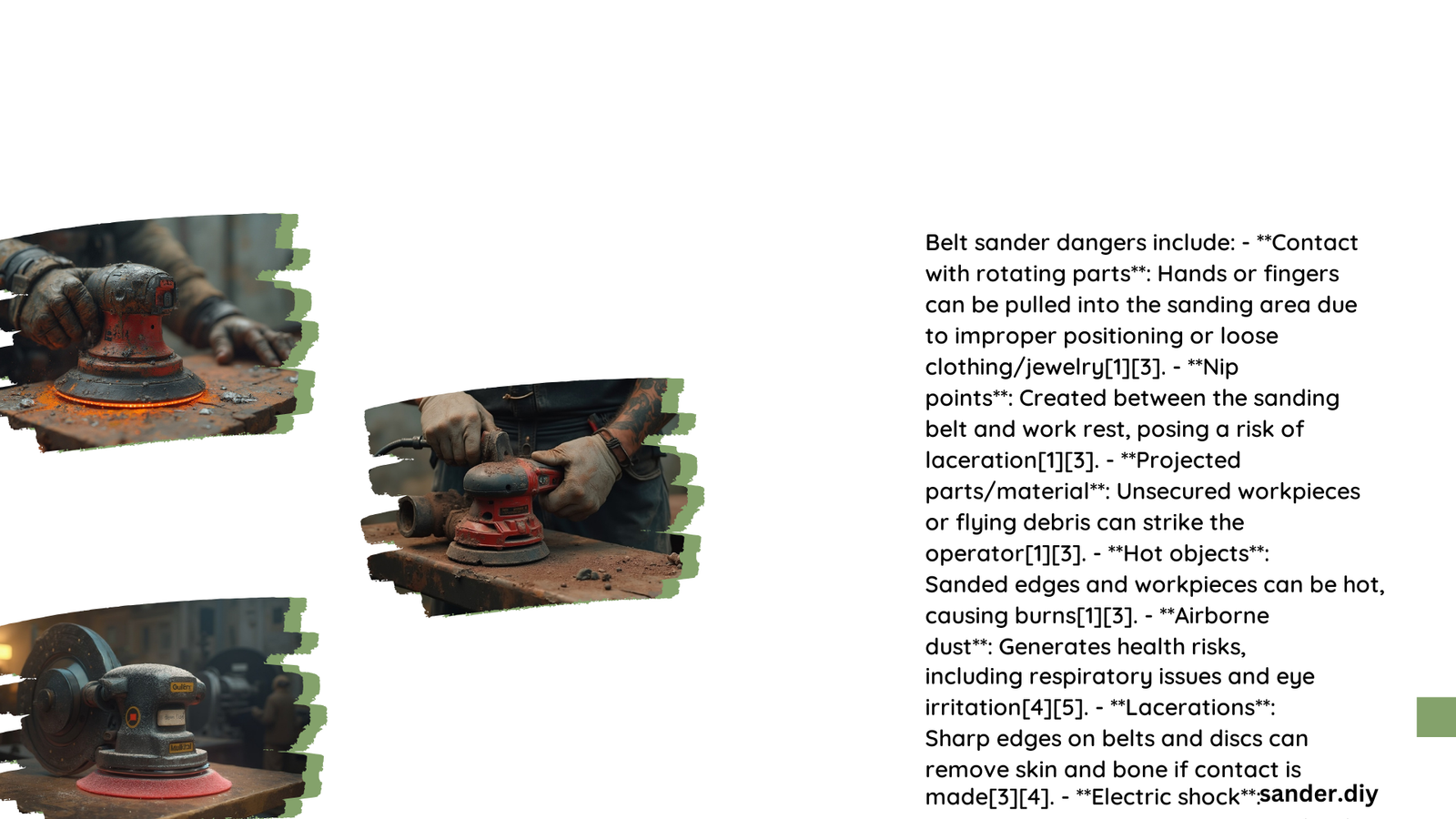Belt sanders are powerful tools that can pose significant risks if not used properly. From severe abrasions and cuts to respiratory issues caused by wood dust, understanding these dangers is crucial for safe operation. This article explores the various hazards associated with belt sanders, prevention strategies, and essential safety guidelines to ensure a secure working environment.
What Are the Main Hazards of Using a Belt Sander?
Belt sanders present several operational hazards that users should be aware of:
-
Contact and Impact Injuries: The rapidly moving sanding belt can cause serious abrasions, cuts, and even crush injuries if it comes into contact with skin or clothing.
-
Dust and Particulate Exposure: Belt sanders generate significant amounts of wood dust, which can lead to:
- Eye and skin irritation
- Allergic reactions
- Reduced lung function
- Asthma
-
In severe cases, nasal cancer
-
Noise-Induced Hearing Damage: The high-decibel output of belt sanders can cause hearing loss over time if proper protection is not used.
-
Entanglement Risks: Loose clothing, hair, or jewelry can become caught in the moving parts, leading to severe injuries.
-
Thrown Workpiece Hazards: Improperly secured materials can be ejected at high speeds, potentially causing impact injuries.
How Common Are Belt Sander Accidents?

While specific data on belt sander accidents is limited, it’s worth noting that nearly half of all accidents involving abrasive wheels (which include belt sanders) are due to unsafe work practices or operator error. This highlights the importance of proper training and adherence to safety guidelines.
What Personal Protective Equipment (PPE) Is Essential for Belt Sander Use?
To minimize the risk of injury, always use the following PPE when operating a belt sander:
- Safety glasses or goggles for eye protection
- Earplugs or earmuffs for hearing protection
- Dust mask or respirator for respiratory protection
- Steel-toed shoes or boots for foot protection
- Gloves for hand protection (when appropriate and safe to do so)
How Can Users Prevent Belt Sander Injuries?
Follow these safe handling techniques to reduce the risk of accidents:
- Keep hands away from the sanding belt at all times.
- Use both hands to operate the sander for better control.
- Ensure the sanding belt is installed correctly and matches the pulley drum width.
- Secure workpieces firmly to prevent them from being thrown.
- Avoid approaching the nips between the belt and the table.
- Use a stop block when necessary to control workpiece movement.
What Maintenance Practices Enhance Belt Sander Safety?
Regular maintenance is crucial for safe operation:
- Inspect the sanding belt before each use
- Replace worn or frayed belts immediately
- Clean dust from the motor and vents regularly
- Disconnect power before changing belts or making adjustments
- Use and maintain an exhaust system or dust collector
How Should the Workspace Be Set Up for Safe Belt Sander Operation?
Proper workspace organization is essential:
- Clear the area of cords and obstructions
- Install an auxiliary ventilation system if possible
- Adjust the table or stop to within 2 mm of the abrasive belt
- Keep the workspace clean and tidy
- Store tools and materials securely when not in use
- Use jigs or holding devices to secure workpieces safely
What Emergency Procedures Should Be in Place?
Prepare for potential emergencies by:
- Ensuring power controls are within easy reach for quick shutdown
- Knowing how to lock out all power supplies before maintenance
- Having a fire safety plan in place to deal with dust-related fires or explosions
How Can Users Assess and Mitigate Belt Sander Risks?
Conduct a thorough risk assessment by considering:
- Potential Hazards:
- Direct contact with moving parts
- Entanglement risks
- Dust inhalation
- Noise exposure
-
Fire or explosion from flammable dust
-
Likelihood of Incidents:
-
High, due to the nature of the work and potential for operator error
-
Effectiveness of Safety Measures:
- Proper PPE use significantly reduces injury risk
- Auxiliary ventilation can reduce dust emissions by over 75%
- Regular inspections and training are crucial for maintaining safety
By understanding these belt sander dangers and implementing proper safety measures, users can significantly reduce the risk of accidents and injuries. Always prioritize safety, follow manufacturer guidelines, and stay alert when operating these powerful tools.
